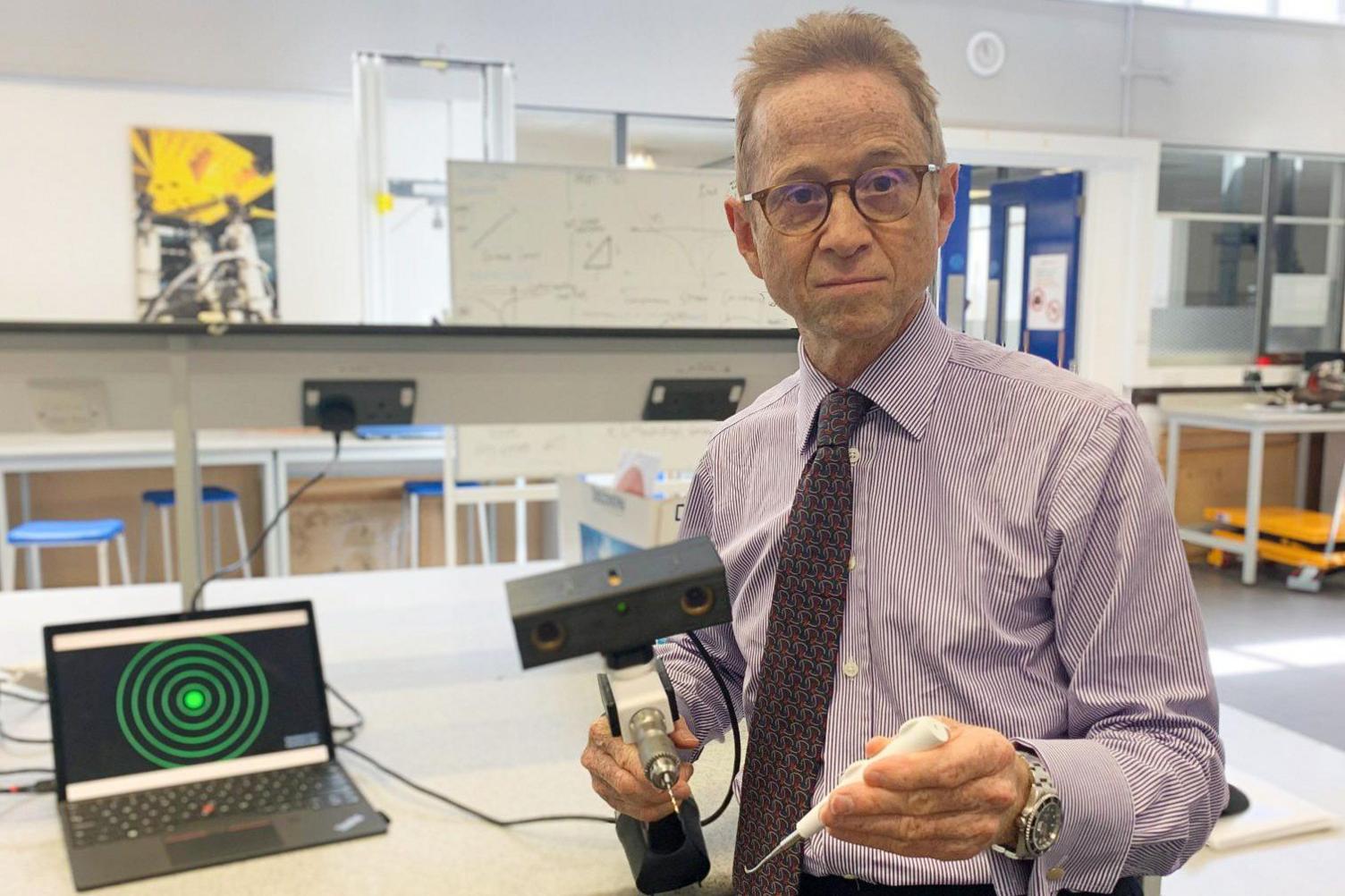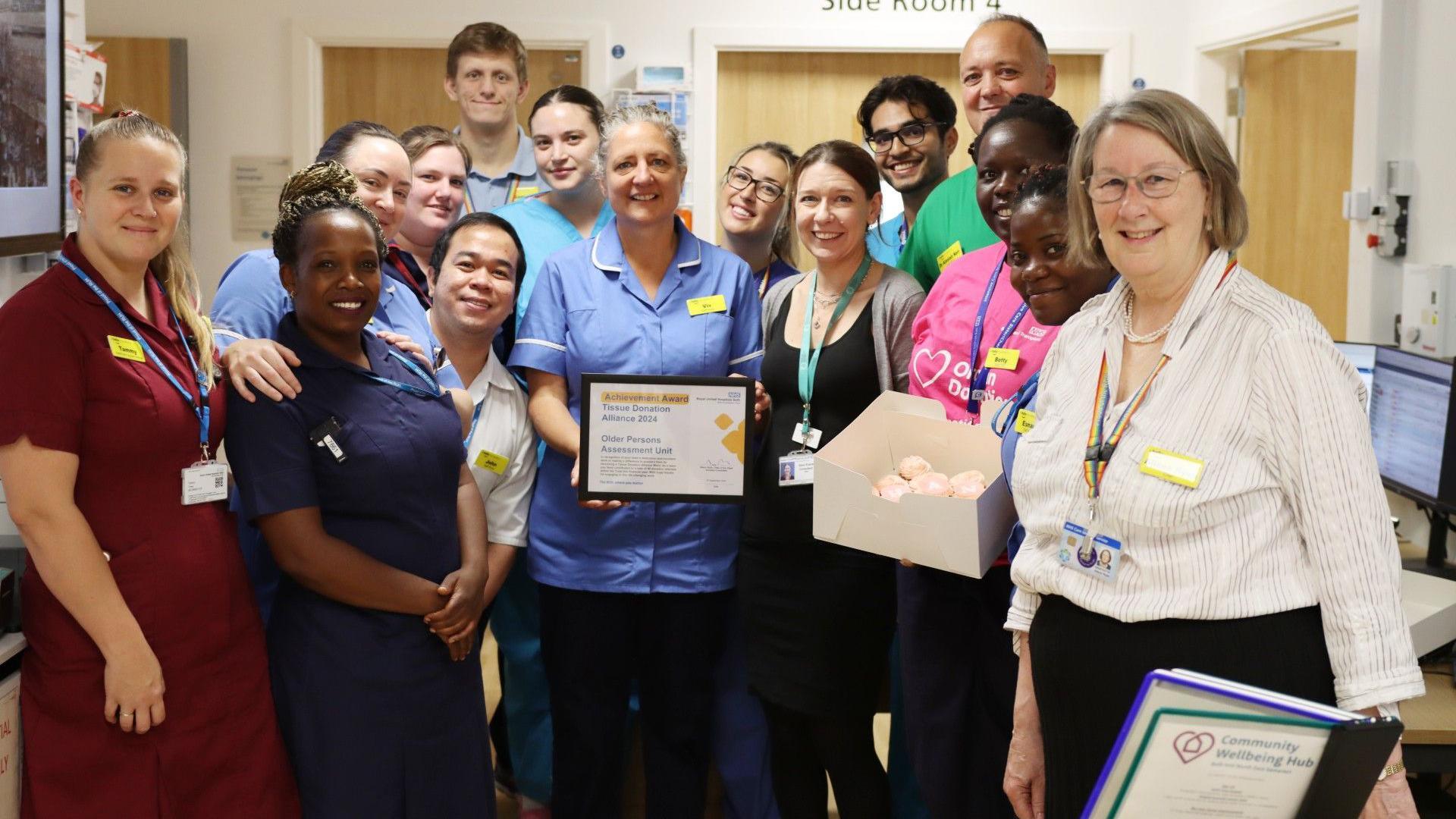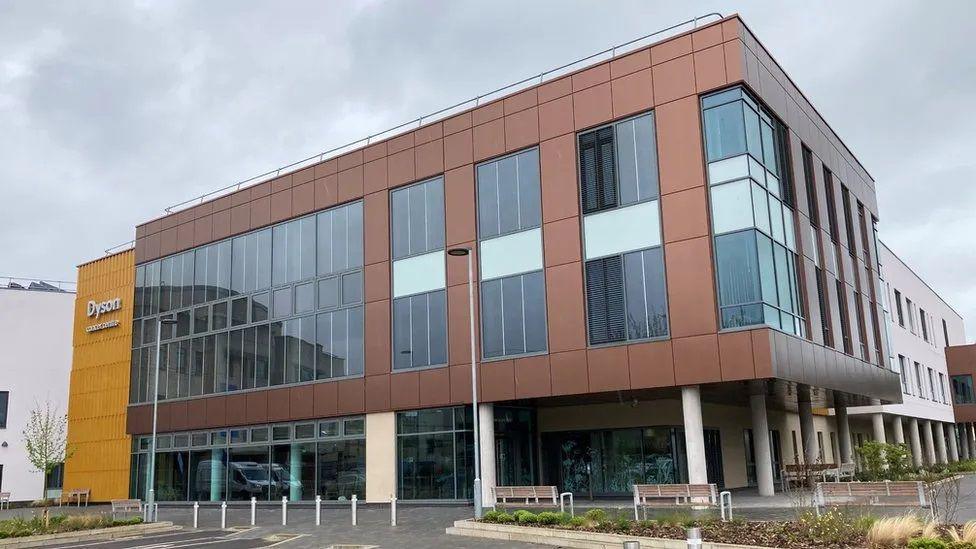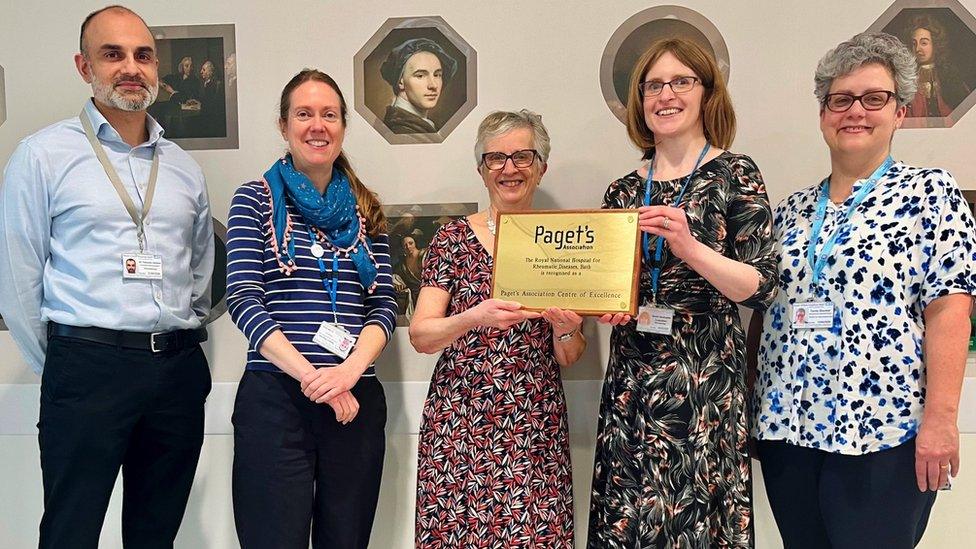'Groundbreaking' bone-drilling kit used in surgery

One doctor said the new device represents a "significant advancement"
- Published
A “groundbreaking” medical device which improves the accuracy of drilling screw holes into bones has been used in surgery for the first time.
The drill guidance system (DGS) has been used in a operation at the Royal United Hospital (RUH) in Bath.
The device, developed in collaboration with the University of Bath, helps to reduce x-rays, bone and soft-tissue damage and infection chances.
“[It] represents a significant advancement in medical device development,” said Dr Ioannis Georgilas, from the university's Department of Medical Engineering.
When fixing a broken bone, a surgeon will normally use their eyesight and x-rays when directing the drill to make a hole in the bone for a screw.
With the new device, all the same techniques are used, with the addition of a camera on the drill and an indicator which helps them guide the drill in the right direction.
Professor Grey Giddins, a Consultant Orthopaedic and Hand surgeon who is leading the project, said: “The use of the drill guidance system for the first time during surgery is fantastic news.
"It really will improve the experiences of the people we care for, reducing the amount of time they spend in surgery as well as reducing the chances of infection."
The development follows "extensive" research at the RUH and certification from the Medicines and Healthcare products Regulatory Agency (MHRA).
“This achievement underscores the efforts and expertise of the research teams at both the RUH and the University of Bath," said Dr Georgilas, who has supported Prof Giddins on the project.
"We are proud of the collaboration that has brought this innovative solution to fruition, enhancing surgical precision and patient care.”
Follow BBC Somerset on Facebook, external and X, external. Send your story ideas to us on email or via WhatsApp on 0800 313 4630.
Related topics
- Published24 September 2024

- Published22 April 2024

- Published23 March 2024
